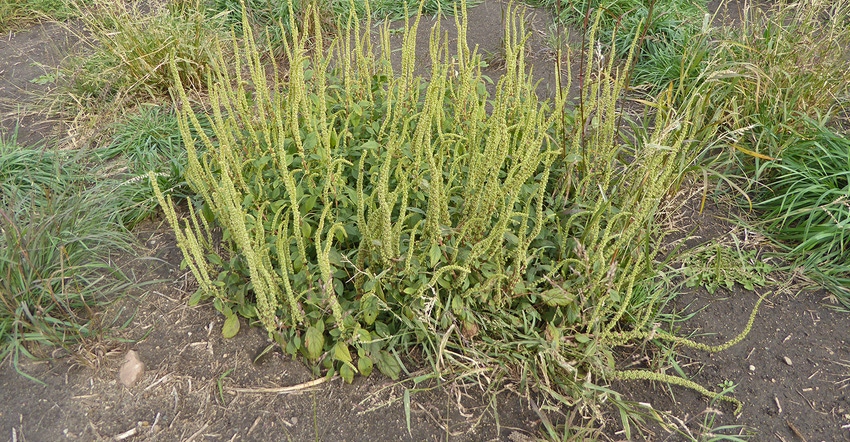October 17, 2018

A second Palmer amaranth plant was found this growing season in Jackson County, Minn.
The Minnesota Department of Agriculture is investigating the source of this latest find. The first Palmer weed confirmed in 2018 was found in Redwood County in mid-September.
In early September, a Jackson County farmer noticed a suspicious weed in the first few rows of a soybean field adjacent to a utility field road. The weed had survived an herbicide treatment, making initial identification difficult. The farmer then contacted the University of Minnesota Extension, which submitted the plant for genetic identification.
The test confirmed it was Palmer amaranth. MDA staff have scouted fields in the area and have not found any other Palmer plants.
“This is another case illustrating the effective collaborations established between the MDA, University of Minnesota Extension, crop consultants and farmers throughout the state for locating and reporting Palmer amaranth,” said Mark Abrahamson, MDA’s director of plant protection, in a news release. “We continue to urge farmers and landowners to become familiar with what Palmer amaranth looks like, and to immediately contact the MDA, Extension or a crop consultant for help if they suspect Palmer amaranth on their property.”
Since 2016, the invasive weed has now been found in six Minnesota counties. It was also discovered in conservation plantings in Lyon and Yellow Medicine counties in 2016, and Todd and Douglas counties in 2017. However, after eradication treatments, Palmer amaranth has not been found at any sites in those four counties during 2018.
Palmer amaranth is listed as a Prohibited Weed Seed. This means no Palmer amaranth is allowed in any seed offered for sale in the state. It is also on Minnesota’s Prohibited Noxious Weed Eradicate List. All above- and below-ground parts of the plant must be destroyed. Also, no transportation, propagation, or sale of this plant is allowed.
If farmers and landowners suspect Palmer amaranth, they can contact the MDA through the Arrest the Pest line at 1-888-545-6684 or [email protected].
Palmer amaranth is native to the southwestern United States and northwestern Mexico. It has been found in over half of U.S. states. Along with Minnesota, it has been found in the neighboring states of Iowa, North Dakota, South Dakota and Wisconsin.
Source: MDA
You May Also Like




